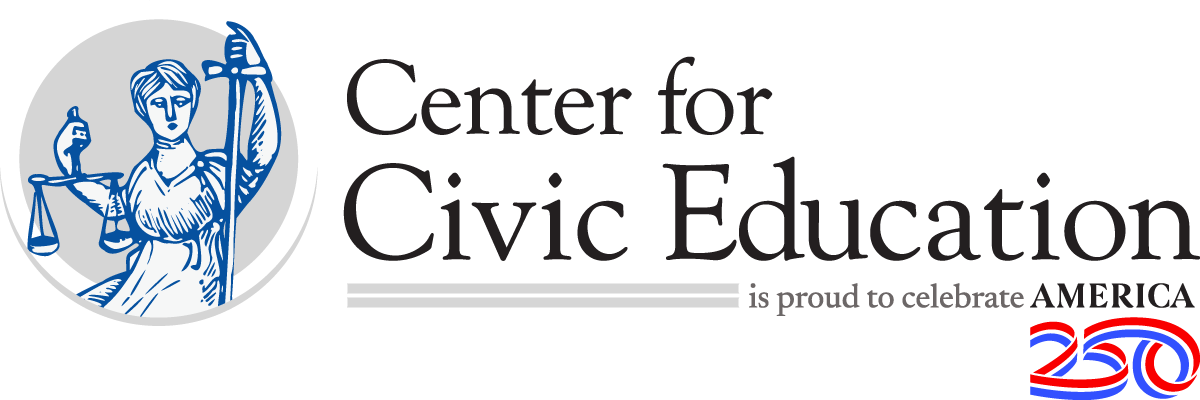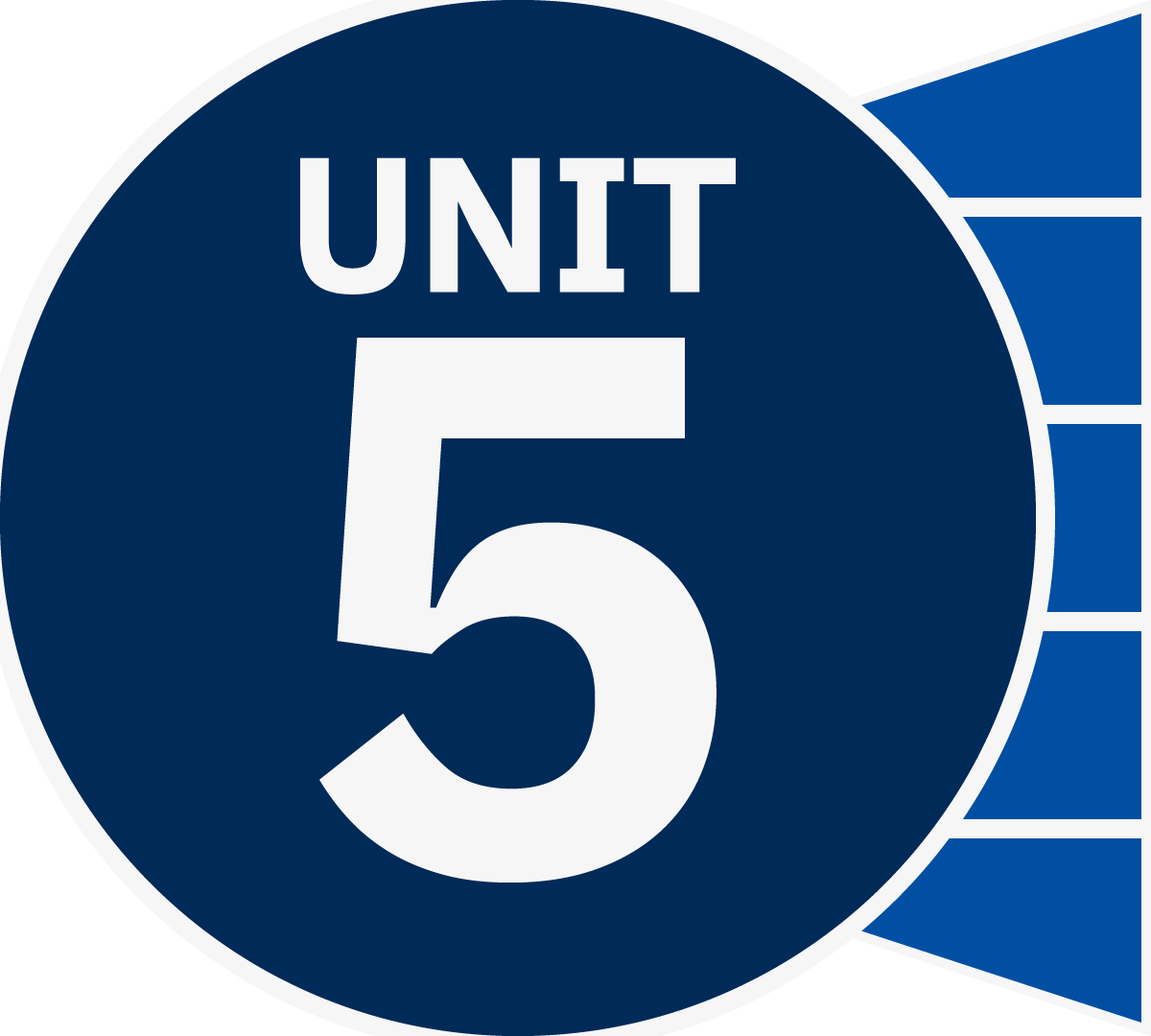Inquiry Companion: Unit 5
Unit 5 challenges students to trace the shifts in federal oversight as well as public opinion when it comes to civil liberties. Our Inquiry Companion Guide activities for Unit 5 facilitate student participation in inquiry-based civics learning for each strategy.
Students engage by considering the meaning of consent of the governed as well as explore primary source documents associated with landmark Fourth, Fifth and Sixth Amendment Supreme Court cases. They will explain the tension created by the intersection of Free Exercise Clause and the Establishment Clause by participating in a Paideia Seminar. Students then elaborate on their knowledge of the rights of the accused through a democratic experience simulation. Finally, students will evaluate their understanding of the Bill of Rights as they assess and defend each amendment.
Best practices for culturally responsive teaching weave through each activity.
Inquiry Guide Activity
- Unit 5, Lesson 28: How Does the First Amendment Affect the Establishment and Free Exercise of Religion?
- Unit 5, Lesson 24: How Does the Constitution Protect Freedom of Religion?
- Attentiveness to political matters
- Active learning
- Active listening
- Citing evidence
- Collaboration
- Critical thinking
- Relationship skills
- Self-management
- Identify the free exercise clause and the establishment clause.
- Explain the tensions between the two clauses as created in the First Amendment, historical understandings, and shifting Supreme Court decisions.
- Civil Dialogue Organizer post-seminar reflection
- Does America really have separation of church and state?
- coercion To cause someone to do something by force or threat.
- establishment clause The part of the First Amendment that says the government cannot declare an official religion.
- free exercise clause The part of the First Amendment that says the government may not stop anyone from holding any religious beliefs they choose and may not unfairly or unreasonably limit anyone’s right to practice their religious beliefs.
- inalienable rights Fundamental rights that every person has that cannot be taken away by the government.
- polygamy Marriage in which one individual may have more than one spouse at the same time.
- redress The act or an instance of setting right a wrong; remedy or cure.
- reverence Feeling of honor and respect.
- sovereign Having the most political power or authority.
The freedom of religion in America has a long history. Many early American colonies were founded by religious groups seeking refuge from persecution in Europe, like the Pilgrims and Puritans of Massachusetts and the Catholics of Maryland. Some colonies, like Rhode Island and Pennsylvania, adopted more tolerant and inclusive policies towards different religious beliefs. The Maryland Toleration Act of 1649 was the first law to protect religious freedom in the thirteen colonies; it ensured religious freedoms to Christian settlers of different denominations in hopes that it made Maryland a more desirable location for immigration.
The diversity of approaches in various colonies laid the groundwork for the eventual inclusion of religious freedom protections in the Constitution. Article VI provided the only protection in the U.S. Constitution for religious freedom stating, “No religious Test shall ever be required as a Qualification to any Office or public Trust under the United States.” Anti-Federalists did not believe this was sufficient to protect religious liberty and wanted it to be further included. It was ultimately included in the First Amendment of the Bill of Rights in 1791.
However, these two clauses have come into conflict over the years and some scholars argue that they likely changed in their original meanings. The tensions of these two clauses have manifested in numerous legal challenges in Supreme Court cases. The interpretation of these clauses has evolved, with shifting judicial perspectives impacting the balance between allowing individuals to freely exercise their own religion and preventing government actions that might favor particular religious beliefs or practices. This tension demonstrates the ongoing complexities in defining the boundaries of religious liberty in a diverse society.
Additional resources for teacher background:
- Freedom of Religion (Video)
- The Free Exercise Clause (Video)
- The Establishment Clause: Freedom of Religion, Part 1 (Video)
- Free Exercise of Religion: Freedom of Religion, Part 3 (Video)
This seminar is designed to give students a lens into the original intent of the clauses with historical excerpts and how they have been interpreted through the years with Supreme Court decisions and laws.
Teachers should preview all student materials and resources prior to the lesson.
Part 1
- Welcome students to social studies.
- Introduce the inquiry question: “Does America really have separation of church and state?”
- Allow students time to make a prediction about the inquiry question as well as offer their own supporting questions.
- Tell students that today they will examine the free exercise clause and establishment clause of the First Amendment.
- Create a T-chart with one column titled “Free Exercise Clause” and the other column titled “Establishment Clause.”
- Play Freedom of Religion. While students watch, they should listen for the basic definition of the free exercise clause.
- Play the video a second time to ensure comprehension, if needed.
- After they have watched, ask students to share a definition and/or examples of the free exercise clause and establishment clause. Students should be able to explain that the free exercise clause is intended to protect individuals’ rights to practice or not practice a religion while the establishment clause is intended to prevent the government from establishing an official religion.
Part 2
- Tell students that today they are going to read and discuss various perspectives of the two clauses and how they are in tension with one another. To help students understand this tension, present the following questions for students to consider:
- Can a public school require students to participate in morning prayer?
- Can the government participate in religious practices, like prayer, without establishing a religion?
- Can a menorah be displayed at a firehouse or police station?
- How can the government allow individuals who wish to offer a prayer before a government event, the opportunity to practice their religion while also not seeming to establish one religion over another?
- Can the federal government refuse to allow time off for individuals who wish to observe religious holidays?
- Tell students that they will investigate the idea of a separation between church and state.
- Distribute the Free Exercise Clause and Establishment Clause Text Set and examine the First Amendment section as a class.
- Model for the class how to annotate the First Amendment using the Annotation
Station strategies:
- Highlight in YELLOW phrases that confuse you. Use context clues to figure out their meaning.
- Highlight in RED examples where rights have been violated, denied, or limited.
- Highlight in GREEN examples where rights have been protected or granted.
- ✩ Star the items that make you wonder and wish to explore further.
- Facilitate the class in restating the First Amendment in their own words. Display class definition.
- Using your routine strategy for setting up groups, divide the class into five collaborative groups of approximately three to four student members. Each group will be assigned one of the five sections of the text.
Part 3
- Thank students for their work on the First Amendment activity and acknowledge that they are scholars on our First Amendment freedoms.
- Inform students that as a class they will now participate in a conversation about their assigned text.
- Distribute copies of the Civil Dialogue Organizer to facilitate goal setting and reflection.
- Follow the procedures outlined in the Explain: Paideia Seminar Plan to facilitate
the discussion.
Students may explore alternative cases such as:
Free exercise clause:
- Burwell v. Hobby Lobby Stores
- Church of Lukumi Babalu Aye, Inc. v. City of Hialeah
- Employment Division, Department of Human Resources of Oregon v. Smith
- Holt v. Hobbs
- Masterpiece Cakeshop, Ltd. v. Colorado Civil Rights Commission
- Sherbert v. Verner
- West Virginia State Board of Education v. Barnette
- Wisconsin v. Yoder
Establishment clause:
- Carson v. Makin
- Espinoza v. Montana Department of Revenue
- Santa Fe Independent School District v. Doe
- School District of Abington Township, Pennsylvania v. Schempp
- The American Legion v. American Humanist Association
- Town of Greece v. Galloway













